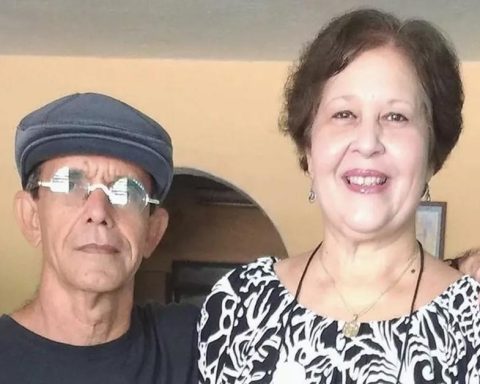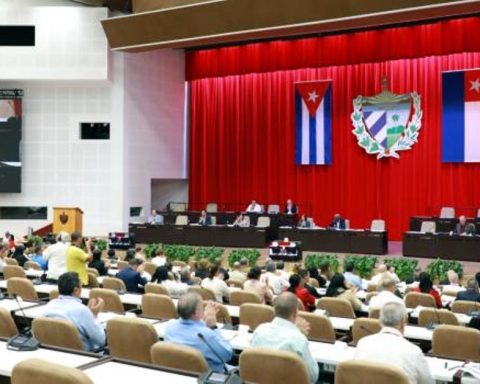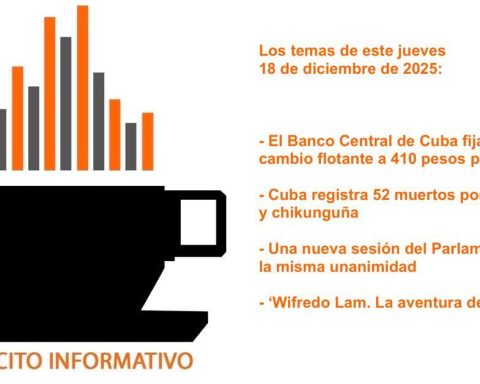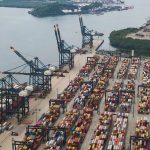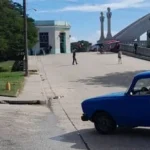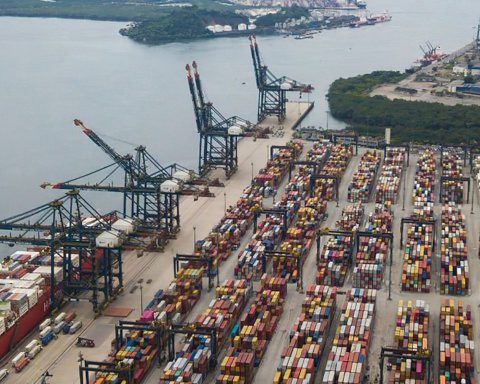After an arduous seven-year negotiation with the Valencian government, Havana has given its answer: the paintings by Joaquín Sorolla kept by the National Museum of Fine Arts, whose trip to Spain for the centenary of the painter’s death was planned, will remain in Cuba. The rudeness was to be expected. This is a country fraught with numerous debts and shady deals, which stole almost all the art housed in its art galleries from its rightful owners, and whose regime does not want to risk another dispute in the field of international law.
Valencia, for its part, has had to resign itself. Carmen Amoraga, General Director of Culture and Heritage of the Generalitat, publicly stated that the Cuban government had decided to suspend the loan, alleging that the “international situation” was not propitious. She didn’t give many details. She spoke of frustrated negotiations, of diplomatic brakes and left open, at least in theory, the possibility of a change of opinion.
When contacting Amoraga’s office directly, the response – “at the direction of the general director” – was even more laconic: “We have no information on the subject.” There was also silence from the other shore, where an explanation was requested in vain from curators and experts from Havana.
Finally, a collector of Cuban origin, aware of the affaire Sorolla, diagnosed the problem: “Nobody will dare to speak in the museum, since specialists have no control over international loans. That decision was made in ‘high places’, between the Ministry of Culture and the Foreign Ministry. The reason for the Silence on both sides is simple: avoid scandal, bad press, entanglement”.
“The decision was made in the ‘high spheres’, between the Ministry of Culture and the Foreign Ministry. The reason for the silence of both parties is simple: to avoid scandal, bad press, entanglement”
In 2016, a delegation of Valencian businessmen, headed by the president of the Autonomous Community, Ximo Puig, traveled to Havana. The political atmosphere was tense, but very promising. Fidel Castro, in a terminal state, would die a month after that visit. His brother, Raúl, seemed ready for an economic opening and had begun the thaw diplomat with the United States. And Eusebio Leal, the frenetic City Historian – as well as a smart manager – had brought the relationship with Spain to its best moment.
Puig returned to the Peninsula in a state of grace. In addition to fulfilling his commercial agenda, his Havana associates had considered giving him –between smokes of cigars and meetings in guayaberas– some thirty sorollas, in addition to other works by Valencian artists such as Mariano Benlliure and Julio Vila Prades. In the event that the loan materialized, Spain would have to clean and restore the paintings, in addition to paying for their transfer from the island.

The plan consisted of surpassing a 1985 exposition that Fidel Castro, firmer than ever in power, had consented to: The Sorollas of Havanaopen for a month in Madrid and another in Valencia.
In 2019, it was Carmen Amoraga who traveled to the Cuban capital. The city celebrated the 500 years of its foundation. Eusebio Leal, very ill, was living his last months and Miguel Díaz-Canel, a president appointed from above, was the visible figurehead of a hidden power, dependent on the Castro family clan. In just three years, the rules of the game had changed. After a review of the state of the Sorollas, Amoraga did not close any deal with the Cuban government, but everything seemed to indicate that the paintings would travel to Spain in 2023, in time for the celebration.
However, they would no longer be thirty but just ten. Some paintings, the official explained, were subject to litigation and could not leave Cuba. The works of the other Valencian masters were also left out of the discussion.
The conversation weakened with the 2020 pandemic. The Havana regime entered a deep crisis, marked by the massive protests of July 11, 2021 and a growing international discredit, reaffirmed by its alliance with the Kremlin and its consent to the Putin’s invasion of Ukraine. But the most suffocating dimension of the problem was the millionaire defaults accumulated by Castro after several decades of subterfuge to evade creditors.
It is estimated that Cuba keeps the third most important collection of sorollas in the world, after Spain and New York
Last February, the investment fund CRF I sued Banco Nacional de Cuba before the High Court of Justice in London for a debt of 72 million euros. Faced with the possibility of an unfavorable ruling, which was confirmed on April 4 when the British court partially agreed with the creditor, Havana decided not to venture to lend the sorollas, most of them illegally confiscated by Castro after 1959. This is the ” international situation” which, according to Amoraga, spoiled the party for the Valencian government.
It is estimated that Cuba keeps the third most important collection of sorollas in the world, after Spain and New York. From 1920, collectors, millionaires and cultural institutions were acquiring them, sometimes from the artist himself. In the museum’s Universal Art Building, a formidable palace located on the Paseo del Prado in Havana, you can admire Valencian fisherwomen (1908), going to sea (1908) or Summer (1904), perhaps the most valuable of Sorolla’s paintings on the island and, without a doubt, the one most integrated into the visual memory of Cubans.
By 1950, almost all of Cuba’s sorollas were owned by sugar magnates, the Lobo, Cintas, and Fanjul Gómez-Mena families, whose names do not appear in Havana catalogues. There is also no talk of theft -disguised as transfer to the socialist State – carried out by the Ministry of Recovery of Misappropriated Assets after the triumph of the Revolution.

The Fanjuls –related by marriage to the Gómez-Menas–, who went into exile in the United States and there rebuilt their fortune, had hidden several paintings behind a purpose-built wall in their mansion in El Vedado. The revolutionary government turned the property into a Museum of Decorative Arts and took over all its masterpieces, including the hidden ones. Many of them were auctioned off at prestigious houses, such as the British Sotheby’s, or ended up in the hands of Castro’s leaders and associates.
When at the end of the nineties the businessman José Fanjul discovered that Port of Malaga (1910) –one of his family’s sorollas– had been sold in London, he assembled a team to identify the buyer. Sotheby’s washed its hands and tried to get away with the investigation, but the alert reached Havana. The Fanjuls, concerned that Castro would sell the works seized from his family to get out of the economic quagmire the fall of the Soviet Union had put him in, launched several international lawsuits to curb organized art trafficking on the island. The Cintas Foundation did the same in 1995, when it learned that two sorollas by Cuban magnate Oscar Cintas were for sale at Sotheby’s.
The investigations of the former owners of the paintings brought to light an intricate network of dealers, peddlers, curators, spies and agents of the regime. In 2009, when Havana discreetly lent two sorollas to the Prado Museum –one of them was Summer–, the Fanjul once again launched into judicial combat. Protected by the Helms-Burton Act, which penalizes the trafficking of goods expropriated by Castro, they sued the museum. However, they were unable to recover the pieces.
The intransigence of Fidel’s political heirs, the fracture of power in anticipation of the death of Raúl Castro, who will turn 92 in June, and the debacle of the national economy further distance the happy ending that the Valencian authorities have been waiting for since 2016. With these precedents and the media attention on the Sorolla Year, it is unlikely that the painter will be able to evade his kidnapping in Havana.
________________________
Collaborate with our work:
The team of 14ymedio He is committed to doing serious journalism that reflects the reality of deep Cuba. Thank you for accompanying us on this long road. We invite you to continue supporting us, but this time becoming a member of our newspaper. Together we can continue transforming journalism in Cuba.
